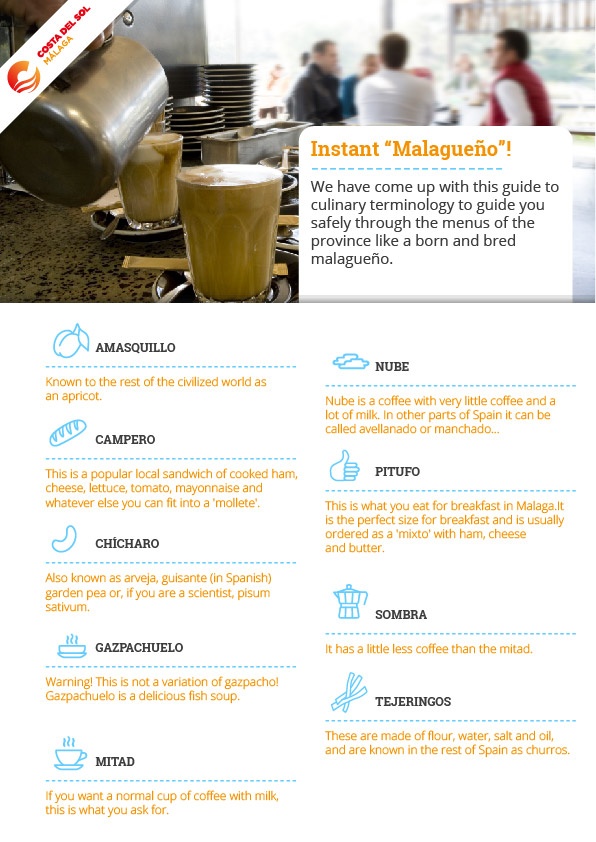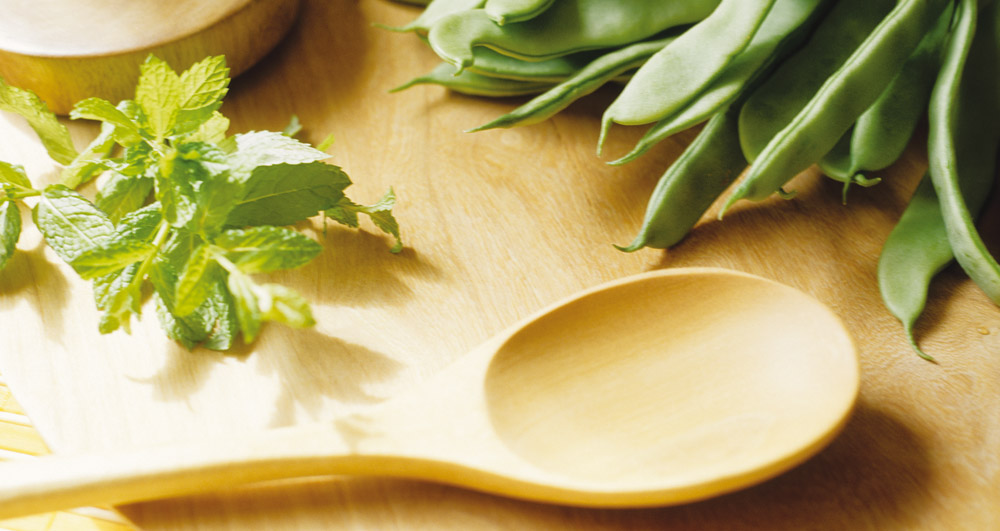When visitors from other parts of Spain come here to Andalusia, the number of different local words we use can make them feel like foreigners in their own country.
This also happens on the Costa del Sol, especially when it comes to food and restaurants. There is no need for alarm. We have come up with this guide to culinary terminology to guide you safely through the menus of the province like a born and bred malagueño.
A breakfast in Malaga without a pitufo is not a real breakfast (to make it more confusing, this is also the Spanish name for the Smurfs), and you are bound to be esmallao (or starving, as we might say…) later on.
- Amasquillo: known to the rest of the civilized world as an apricot.
- Campero: This is a popular local sandwich of cooked ham, cheese, lettuce, tomato, mayonnaise and whatever else you can fit into a 'mollete' (a local soft bread roll). These are a local delicacy that became very popular in the 80s.
- Chícharo: Also known as arveja, guisante (in Spanish) garden pea or, if you are a scientist, pisum sativum. Whatever you might usually call them, here on the Costa del Sol you had better ask for chícharos.
- Gazpachuelo: Warning! This is not a variation of gazpacho! Gazpachuelo is a delicious fish soup that is remarkably simple: egg, oil, salt, potatoes and hake. You simply have to try it, because it tastes wonderful.
- Mitad: If you want a normal cup of coffee with milk, this is what you ask for.
- Nube: If you are sensitive to caffeine or are afraid it might prevent you sleeping, then ask for a cloud, a nube is a coffee with very little coffee and a lot of milk. In other parts of Spain it can be called avellanado or manchado…
- Pitufo: This is what you eat for breakfast in Malaga. It is named after the Spanish word for the Smurfs, but is actually a kind of large Vienna roll. It is the perfect size for breakfast and is usually ordered as a 'mixto' with ham, cheese and butter.
- Sombra: If the nube is too short on coffee for you, but the mitad is too strong, then you need a sombra which has a little less coffee than the mitad.
- Tejeringos: These are made of flour, water, salt and oil, and are known in the rest of Spain as churros but here and in Cadiz they are called tejeringos.









